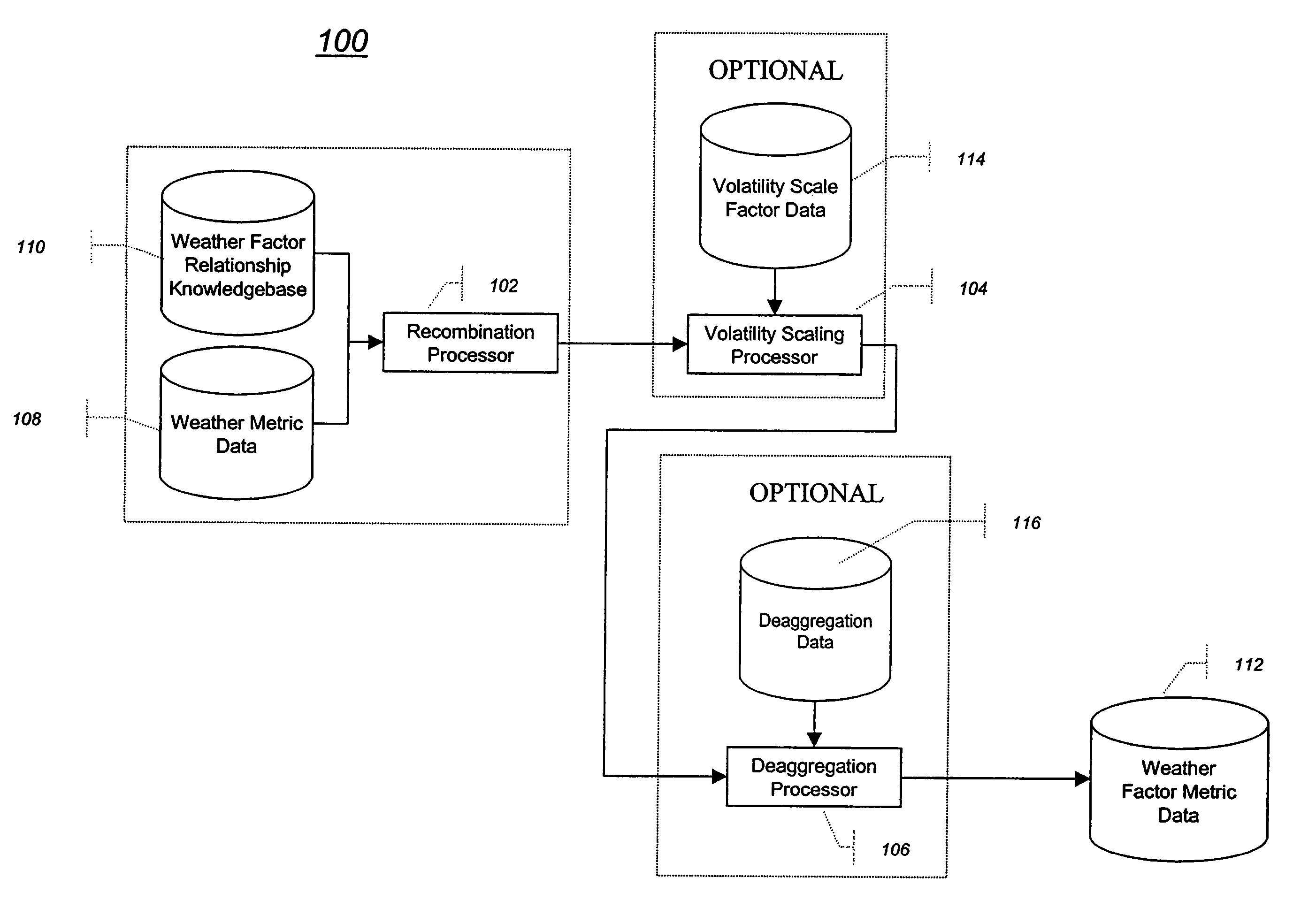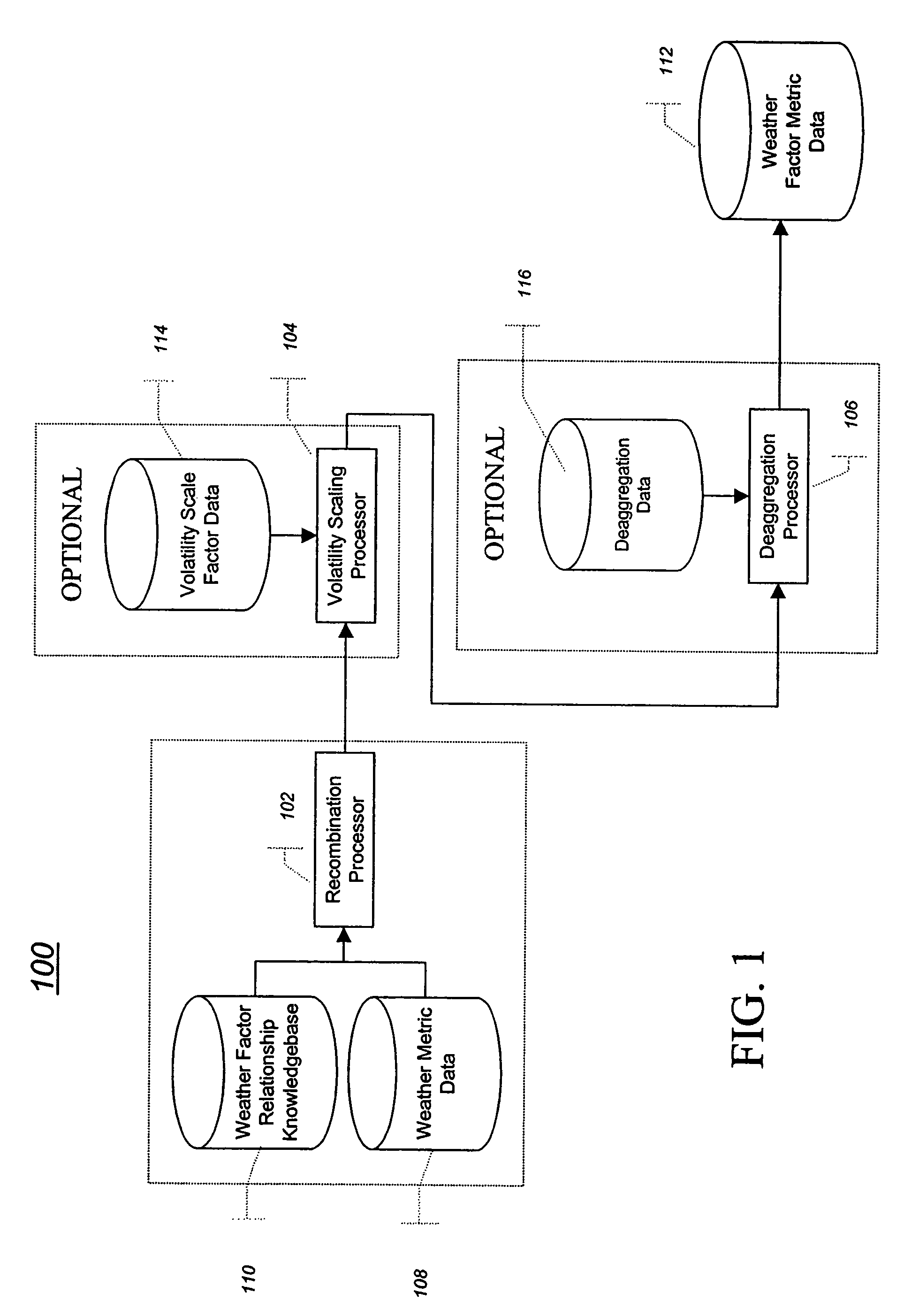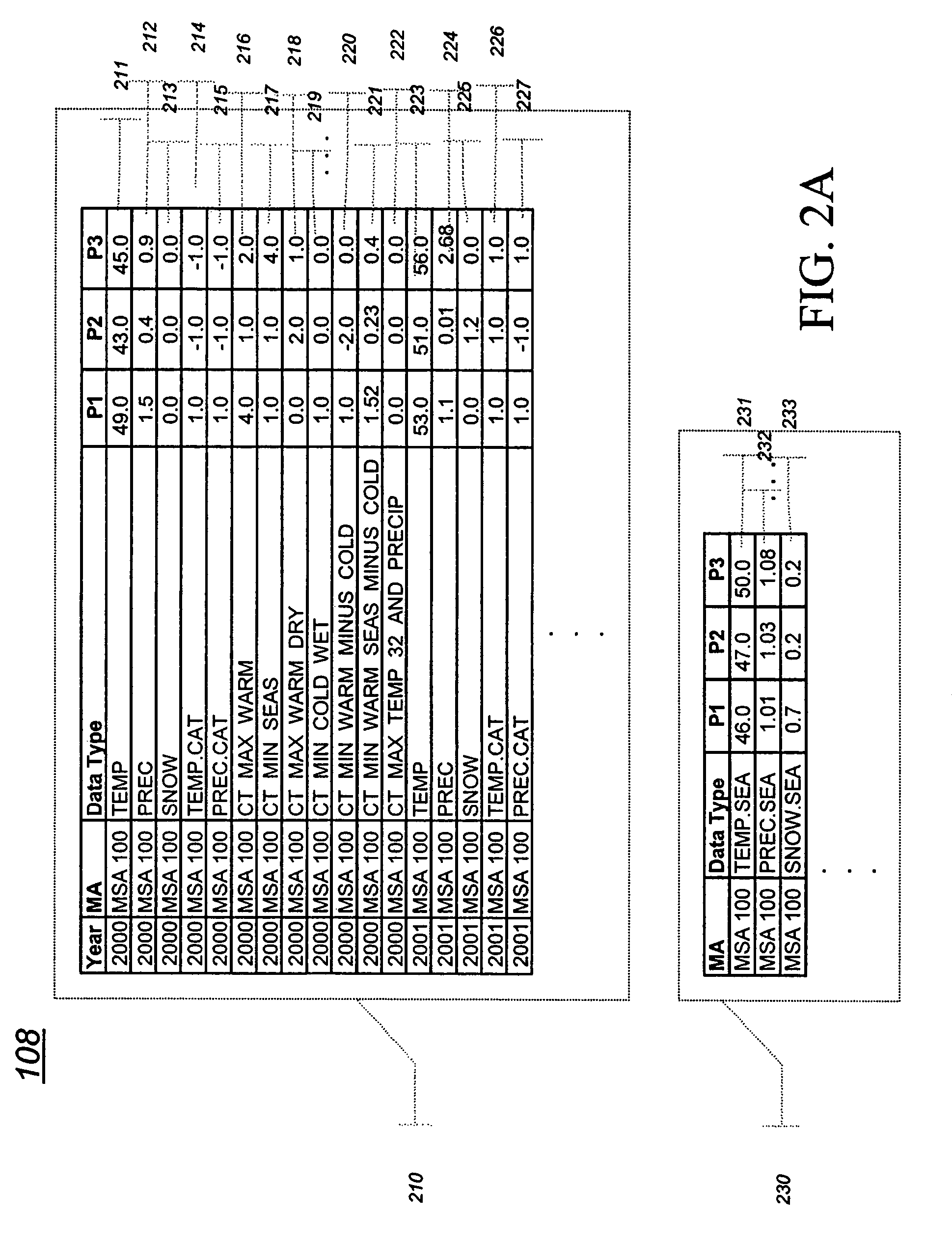System, method, and computer program product for forecasting weather-based demand using proxy data
- Summary
- Abstract
- Description
- Claims
- Application Information
AI Technical Summary
Benefits of technology
Problems solved by technology
Method used
Image
Examples
first embodiment
[0094]In a first embodiment, weather factor relationship knowledgebase 110 comprises at least one empirical scoring matrix. FIG. 3 shows weather factor relationship knowledgebase 110 with an exemplary empirical scoring matrix 310. Scoring matrix 310 is described in U.S. application Ser. No. 09 / 656,397, which is incorporated in its entirety herein by reference. Scoring matrix 310 provides values (e.g., “scores”) indicative of weather-based demand as a function of categories for two category weather data types. In scoring matrix 310, for example, weather-based demand for various combinations of temperature and precipitation category weather data is scored as integers in which −2 corresponds to “most unfavorable”, −1 corresponds to “unfavorable”, 0 corresponds to “typical”, 1 corresponds to “favorable”, and 2 corresponds to “most favorable”. Values in scoring matrix 310 can be determined from an analysis of normalized proxy sales history data for the specific product vis-à-vis the cate...
second embodiment
[0100]In a second embodiment, weather factor relationship knowledgebase 110 comprises at least one weather indices template. FIG. 4 shows weather factor relationship knowledgebase 110 with an exemplary weather indices template 400. Weather indices template 400 can identify an applicable weather index for a specific product / location / time period combination. The applicable weather index for the specific product / location / time period combination can be determined from an analysis of normalized proxy sales history data for the specific product / location / time period combination. The analysis can use statistical techniques, expert assessment, expert definition, or any combination of the foregoing. For example, correlation coefficients between the weather indices and the normalized proxy sales history data can be developed and used to identify a most applicable weather index for the specific product / location / time period combination.
[0101]Furthermore, if the same weather index is determined f...
third embodiment
[0106]In a third embodiment, weather factor relationship knowledgebase 110 comprises at least one proxy model conditions template 500. FIG. 5 shows weather factor relationship knowledgebase 110 with an exemplary proxy model conditions template 500. Proxy model conditions template 500 provides, for a specific product / location / time period combination, a weather-based demand coefficient for at least one actual weather data type, and historically modeled minimal and maximal values. In proxy model conditions template 500, for example, temperature-based demand coefficients and precipitation-based demand coefficients are shown for demand for BOOTS in MSA 100 for various periods of time. In forecasting weather-based demand, minimal and maximal values provide, respectively, lower and upper limits. The lower and the upper limits determine the forecasted weather-based demand in the event that actual weather data is at such an extreme value that the relationship between demand and the weather c...
PUM
 Login to View More
Login to View More Abstract
Description
Claims
Application Information
 Login to View More
Login to View More - R&D
- Intellectual Property
- Life Sciences
- Materials
- Tech Scout
- Unparalleled Data Quality
- Higher Quality Content
- 60% Fewer Hallucinations
Browse by: Latest US Patents, China's latest patents, Technical Efficacy Thesaurus, Application Domain, Technology Topic, Popular Technical Reports.
© 2025 PatSnap. All rights reserved.Legal|Privacy policy|Modern Slavery Act Transparency Statement|Sitemap|About US| Contact US: help@patsnap.com



